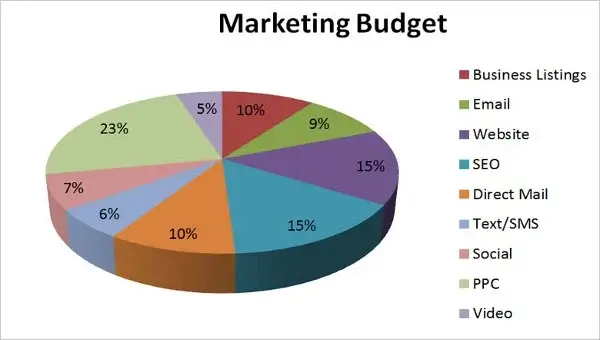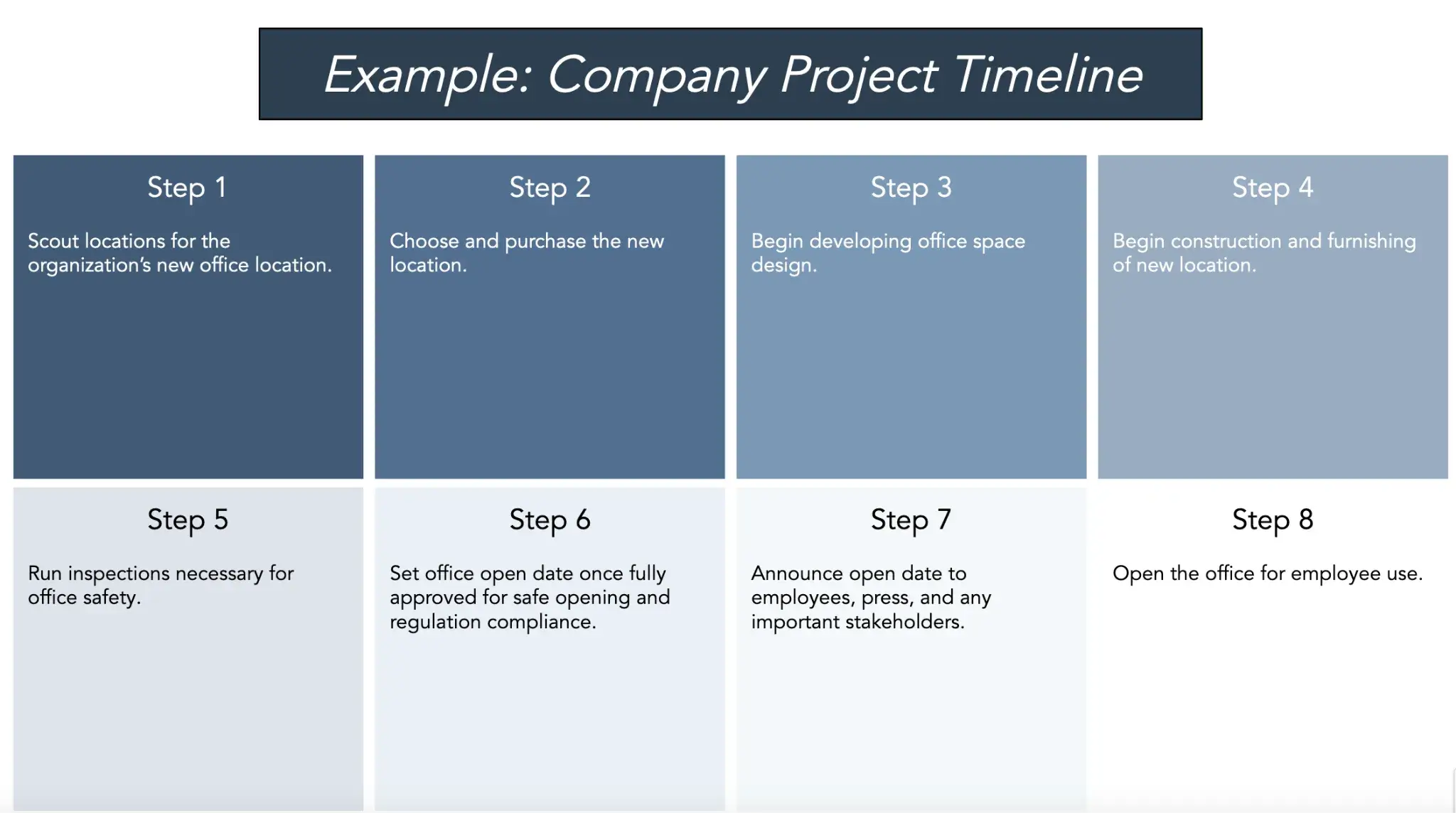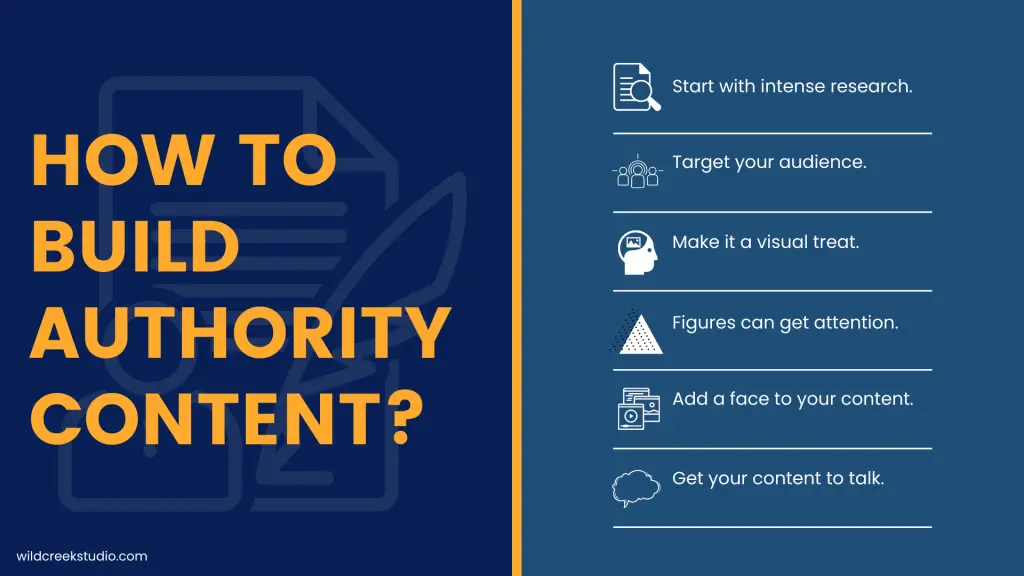Why shouldn't a business just jump in and implement marketing ideas? The answer is simple: without a plan, you make marketing mistakes, and your efforts will likely be disorganized, costly, and ineffective.
Creating an effective small business digital marketing plan requires careful research and planning. Without the right groundwork, you may end up launching campaigns that are ill-suited to your target customers or, worse - wasting money on activities with no reach or return.
In this article, we'll go through the steps to create a marketing plan, considering various types of businesses and how their goals and strategies may differ.
How to Make an Outstanding Marketing Plan
- Determine your target market
- Analyze your competition
- Set goals and create your budget
- Establish your timelines & milestones
- Specify your unique value proposition
- Define your channels & tactics
- Develop your content strategy
- Designate team roles
- Launch your campaign
- Evaluate your results
Also in this article:
5 Marketing Plan Mistakes to Avoid
1. Determine your target market
As with any business strategy, the first step in creating a marketing plan is identifying your target market.
Who are you trying to reach? What are their needs and wants? Get as specific as possible to create a program tailored to this demographic.

For example, in the retail industry, you should consider your customers' age range, geographic location, and other relevant factors. You can also look at how competitors in your space target their markets to gain insight into what may work best for you.
Another example might be in the financial information space. A business that delivers data for banks and business lenders may have a target market composed of financial professionals, entrepreneurs, and other business owners.
In this case, knowing the right techniques to reach these customers is essential. Understanding where they get their information and how to communicate with them is key to success.
2. Analyze your competition
The second step in creating a successful marketing plan is to analyze your competition. It is essential to understand who they are, what they offer, and how they market their products or services. This can help you better target your audience and make your plan more effective.
One way to do this is by keeping track of what other companies in the same space are doing.
What types of campaigns do they run? How often do they use digital vs. traditional marketing methods? What strategies have proven successful for them? All this information can give you valuable insight into what could work for your business.
Another way to analyze competition is through surveys or focus groups. Ask customers about their opinion of competitors' offerings, and find out why customers choose one company over another.
This type of feedback can provide more nuanced information on how you might best position yourself in the marketplace compared to your competitors.
Looking at your competitor's pricing strategy and approach to customer service or product development would be best.
These factors can significantly impact how people see and compare different companies, so it's essential to keep track of them when developing a marketing plan that stands out from the crowd.
3. Set goals and create your budget
Goals will guide all other decisions and strategies. It's critical to be clear on what you are trying to achieve so that you can focus your efforts in the right direction.
When setting your goals, it's essential to consider both short-term and long-term objectives.
Short-term goals should focus on immediate actions with tangible results, such as increasing web traffic or launching a new product line.
Long-term goals should focus on building brand awareness and establishing customer loyalty over time.
In addition to setting specific targets for each goal, you must identify the metrics you will use to measure success. The more metrics you can count to track progress against goals, the better.
Creating a budget also helps set expectations and gives you a clear roadmap for allocating resources and achieving your goals.

When creating your budget, you must consider the short-term and long-term costs of running your campaigns.
In the short term, you'll need to consider expenses such as advertising, staffing, event management, and promotional activities.
Over a long time, you'll need to factor in costs such as website maintenance, software development, and ongoing marketing activities.
It's also important to factor in unexpected costs that may come up during implementation. It's always better to plan for these eventualities rather than be caught off guard when they come up.
Depending on the business, you may need to factor in costs associated with customer support, legal consultation, data storage, and more.
4. Establish your timelines & milestones
This step will help keep your team on track and ensure all tasks are completed in time for launch.
When setting timelines and milestones, it's essential to consider the amount of time needed for each task and ensure adequate overlap between teams to ensure that each job is completed within the allocated time frame.
A timeline maker is a tool or software that allows you to create visual representations of events, projects, or processes in chronological order.
It can be used for various purposes, such as creating historical timelines, tracking project milestones, illustrating a company's growth over time, or mapping out the stages of a creative project.
For example, if one team needs two weeks to complete their portion of a project before another group can begin theirs, you'll need to ensure enough lead time between the two tasks to accommodate this timeline.

Download this template for free
It's also important to be realistic when establishing timelines and milestones. While it's tempting to try and squeeze as much as possible into each timetable, this can create unrealistic expectations and put unnecessary pressure on your team.
It would be best if you also considered any external factors that may affect the timeline, such as the availability of resources or changing market conditions.
In addition to setting task deadlines, you should include regular check-ins throughout the project cycle. These check-ins allow teams to review progress against milestones and adjust accordingly if necessary.
They also allow everyone involved to ask questions or clarify any confusion about the project objectives or timeline. Moreover, you can use tools to manage project milestones.
5. Specify your unique value proposition
What makes your product or service unique? How will you communicate that to your target audience?
Your value proposition should clearly articulate the benefits and features of your products or services and make it easy for potential customers to understand why they should choose you over competitors.
When creating your messaging, consider who your target audience is and what their needs are.
What do they care about most when choosing a product or service? Once you have identified these points, you can craft a message that resonates with this demographic.
It's also essential to ensure that your message remains consistent across all channels (e.g., website, social media, email campaigns).
This helps to create an overarching brand identity that potential customers can recognize and trust.
6. Define your channels & tactics
Different businesses can reach their target audiences in different ways. It’s essential to identify which channels are best for your business and plan how you will use each channel.
Navigate the diverse landscape of business strategy effortlessly with business planner templates.
Tailored to various industries and goals, these simplify channel selection and strategic planning. Streamline your approach and ensure your business reaches its audience effectively.
For example, a brick-and-mortar store might use a combination of in-store promotions, email campaigns, and social media to reach its customers.
On the other hand, an online car title loan company might focus its efforts on SEO, PPC ads, and email campaigns.
There are even differences in the type of channel similar companies use. For instance, a bad credit loans company might find it tough to use specific PPC ads since targeting people with poor credit scores might be disallowed on particular ad networks.
The same logic applies to e-commerce sites. There are specific types of e-commerce channels businesses should be utilizing for these types of businesses.
7. Develop your content strategy
A big part of any marketing strategy is to write content. Great content can come in many forms, from blog posts and ebooks to podcasts and videos. Developing a plan for each type of content you create is essential.
For example, if you’re creating blog posts, you’ll want to decide which topics to focus on and how often new content will be released.
The right video-on-demand marketing platform can make a big difference in reach and engagement if you use video.
You'll need to decide which platform is best for your content, then create a plan of action that outlines how you’ll produce content, promote it, and measure success.
You should also consider how often you’ll post new content, how you will ensure consistency across all channels, and how you will track the results of your efforts.
Creating a successful content strategy requires research, testing, and experimentation – but if done correctly can result in increased visibility and higher conversion rates.
8. Designate team roles
A clear understanding of who is responsible for different tasks and initiatives within the team is essential to ensure that everything runs smoothly.
Designating roles helps to establish responsibility, accountability, and clear expectations so that everyone knows exactly what needs to be done and when.
When assigning roles, it’s essential to consider the strengths of each team member as well as the task at hand.
Ideally, you want to give parts in a way that best utilizes each person’s capabilities while ensuring that everyone has an opportunity to contribute in meaningful ways.
9. Launch your campaign
Once you have defined your channels and tactics, created a content strategy, and designated roles for your team, it’s time to launch your campaign, following your marketing plan.
10. Evaluate your results for future planning
Once digital marketing campaigns are launched, tracking performance metrics and evaluating the results is vital. This allows businesses to learn from their successes and failures and inform future planning.
Companies should track numerous metrics to gain valuable insights, such as reach, engagement, conversions, lead generation, and more.
Furthermore, having a system for A/B testing different elements of campaigns is essential for optimizing results over time.
Through A/B testing additional marketing messages or ad copies, companies can identify what works best with their target audiences and improve their campaigns accordingly.
Tying Your Marketing Plan To Your Website
A website is an essential part of any marketing plan. It is a hub for all digital materials created to market a business or product.
In today’s world, consumers are increasingly using the internet to find information about products and services, and websites are often the first point of contact for potential customers.
For this reason, businesses must have a well-designed website that speaks to their target audience and drives conversions.
Building a website doesn't have to be daunting if starting from scratch. For example, a Wix business website can be created in a matter of hours and provides an easy-to-use platform for creating a functional and aesthetically pleasing website.
5 Marketing Plan Mistakes to Avoid
Now that we've looked at the critical elements of a successful marketing plan let's look at some common mistakes to avoid in your digital marketing strategies.
1. Not setting clear goals
With various marketing blind spots, it's easy to become overwhelmed and forget to set clear goals.
Without a goal in mind, it’s hard to measure results and make improvements.
2. Ignoring your audience or not customizing your content
Customizing your marketing based on your industry, target audience, and buyer persona will help you create content that resonates with your customers.
It’s also important to consider the various channels you are distributing your message.
3. Underestimating the value of educational content
Creating educational content is key to building a successful marketing plan. Educational content helps your customers learn more about the industry and how to use and interact with the products offered by your company.
For example, in the pet industry, a puppy feeding guide can not only teach customers how to feed their puppies but also educate them on the types of food they should buy and why, as well as tips for helping the puppy adjust to a new environment.
Becoming an authority in your field is a crucial way to add value and create trust between you and your customers.

4. Not allocating an advertising budget
Advertising is a big part of any successful marketing plan. It’s essential to allocate the right advertising budget for things such as ads to reach your target audience and drive conversions.
Knowing whether you're going for organic or paid ads (or a bit of both), understanding the different platforms, and investing in actual ads are crucial to getting the most out of your budget.
5. Not tracking everything religiously
Tracking is the cornerstone of a successful marketing plan. By tracking the performance of your campaigns, you will be able to make improvements and maximize results.
Conclusion
An outstanding marketing plan is essential for success in today's competitive marketplace. Following the above steps, you can create a comprehensive and effective marketing plan to help you reach your goals.
With the right strategy, content, and budgeting in place, it’s possible to increase brand awareness, boost ROI and sales, and build customer loyalty.
Author Bio
Hanson Cheng is the founder of Freedom to Ascend. He empowers online entrepreneurs and business owners to 10x their business and become financially independent. You can connect with him here.

